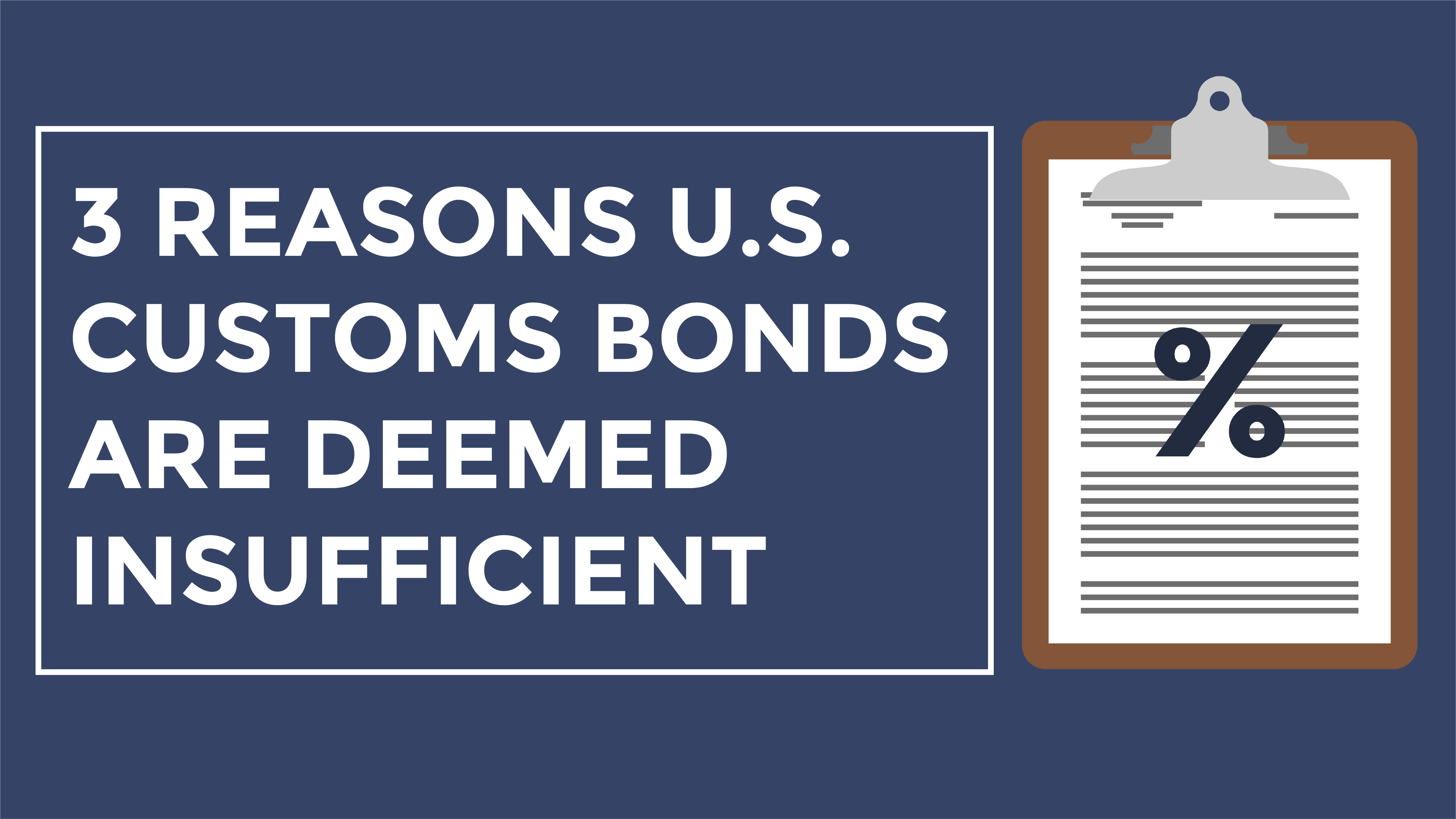In an educational video, Trade Risk Guaranty identifies the top three reasons U.S. Customs Bonds are deemed insufficient.
U.S. Customs Bond Sufficiency is one of those hard-to-grasp topics that continues to be a priority to U.S. Customs and Border Protection. Here at TRG, we are continuing our mission of demystifying the topic with the release of another educational video explaining three reasons why U.S. Customs Bonds are deemed insufficient.
For more background information on U.S. Customs Bonds and Bond Sufficiency, check out our entire U.S. Customs Bond Education playlist on YouTube.
The 3 Most Common Reasons Customs Bonds Are Deemed Insufficient
Watch the video below to learn the 3 most common reasons Customs Bonds are deemed insufficient by U.S. Customs and Border Protection.
Did you like that video? Subscribe to our YouTube Channel for instant access to the next videos in the Bond Sufficiency series.
- The Importer has imported more in terms of duties, taxes, and fees than the current bond’s capacity.
Since Bond sufficiency refers to whether or not the bond amount is adequate to protect Customs’ revenue and ensure compliance, the top reason CBP may deem your bond insufficient is that you have exceeded the maximum capacity for the bond you have in place.This may be due to an increase in your typical duty rate, an additional tariff associated with your imported commodity, or a change in the amount of entries you make per year. Whichever the reason, Customs is always looking back over the duties, taxes, and fees you have paid over the past 365 days. If that amount is more than your current U.S. Customs Bond’s capacity, they may deem your bond insufficient and require a larger bond be placed.
- The Importer has outstanding money owed to Customs and Border Protection.
Sometimes a bond increase will be required due to any existing debt the importer has outstanding with Customs and Border Protection. For example, let’s say an importer has a $200,000 Customs bond on file, but they have received claims on that bond and have not resolved them in a timely manner. Customs may require them to increase to a $300,000 Customs bond due to the fact that they have an outstanding debt.In cases like this, the importer can choose to pay the outstanding debt instead of increasing their bond amount. In most cases, Customs will no longer require a bond increase once the debt has been paid.
- The address on file for the Importer is incorrect/outdated.
Customs and Border Protection sends many notices to importers through the mail. So if the address you have on file with Customs is incorrect or outdated, you may miss an important piece of correspondence. Therefore, if a piece of mail is returned to Customs as undeliverable, they will deem your U.S. Customs Bond insufficient as a way to ensure you get the information updated as soon as possible. In order to remedy this, you will need to check what address CBP has on file for your company and update it if necessary.Remember, if your bond is rendered insufficient by Customs, you will not be able to make entries into the United States until the situation has been resolved. If that means that you have to place a new bond with a larger bond size, if takes 15 calendar days to terminate and replace a U.S. Customs Bond so you will not want to wait to get the process started.
Remember to see our previous blog post on Understanding an Insufficiency Letter for Your Customs Bond for an in-depth visual breakdown of an insufficiency letter and where to identify the reason for the insufficiency on that letter.





![[Webinar] How Could Changes to De Minimis Impact Your Company?](https://traderiskguaranty.com/trgpeak/wp-content/uploads/2025/05/trg-how-de-minimis-impacts-customs-bond-webinar-400x250.png)

![[Webinar] United States Reciprocal Tariffs – The What, Why, and How](https://traderiskguaranty.com/trgpeak/wp-content/uploads/2025/04/trg-webinar-reciprocal-tariffs-400x250.png)